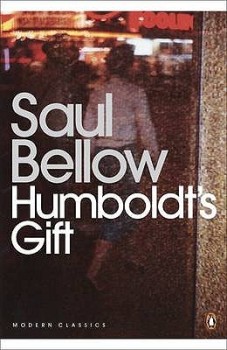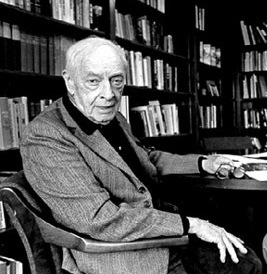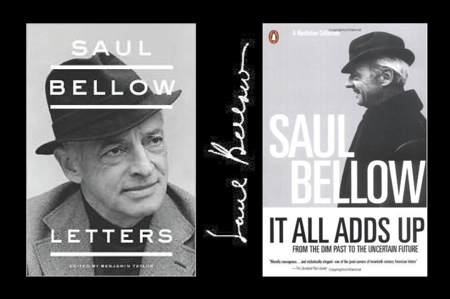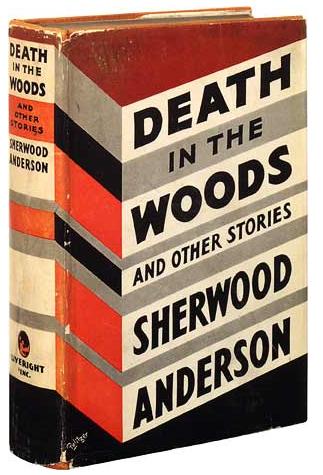Read Part 1, here.
Part Three: The Bellow Problem
The Adventures of Augie March and Seize the Day feel like perfect novels. Augie March doesn’t really have a plot, or even a specific theme, but these aren’t needed. Augie delivers his rambling experiences across North America and Europe, and it’s hard to come up with a sense of the book different from those Augie pronounces, because its largeness defeats a reader’s critical faculties. It is amusing to see critics gratefully grabbing the explanations the novel offers of itself, like drowning men grabbing at ropes. There is so much exuberance in Augie’s world, both in his language and the people he meets, that a plot seems out of place, and symbolism excessive. One reads to hear more about Simon’s ambition and Thea’s pride, rather than how Augie will change or grow.
Bellow wrote Seize the Day next, and I wondered if, wounded by complaints about Augie March’s shapelessness, he set out to write a planned gem. Aside from a jarring flashback in the first chapter, the novel is perfectly plotted and shaped, rising in tension and suspense as the wretched Wilhelm flails around for any possible hope of seizing his day. Bellow’s supporting cast demands that Wilhelm accept their more cheerful philosophies of life, but the novel seems to be suggesting that we are made of memory and regret, and fashionable platitudes about ‘living in the moment’ ignore what makes us human. I’m not sure, however, if my summation will agree with every reader’s impression, or even if I agree with it myself, because the book is so well plotted that it generates, rather than disseminates, ideas.
However, from Henderson the Rain King onwards, Bellow’s work poses readers with a problem. Henderson, Herzog, and Humboldt’s Gift are novels where the protagonist has to learn something, either alone or from a supporting character, and this learning takes up a large proportion of each book’s page count. In Henderson, the educational endeavour is about redeeming one’s base nature. In Herzog, it is the contrast between romanticism and reality. In Humboldt’s Gift, spirituality versus commerce. While it is a commonplace that stories are supposed to show a character learning, usually this is understood to mean that through events and experiences, a character “learns” something about life (in a metaphorical sense of “learning”—it is presumably nothing one could write down as the answer to a quiz question) and, through that insight, is able to grow. However, Bellow’s novels portray a character trying to understand an actual concept or theory, and even a reader who feels herself familiar with the concepts being introduced may remain unsure how to respond.
The idea-heavy nature of these novels should not, in itself, be a problem for the average lover of literature. After all, many great writers see philosophising as a key part of their art. But I believe that a reader can love novels like The Unbearable Lightness of Being or To The Lighthouse, and still come away bemused by Bellow. In The Unbearable Lightness of Being, Kundera outlines a few philosophical ideas—such as Nietzsche’s theory of eternal recurrence—and explains that he will now illustrate and question these ideas by introducing a cast of characters, and seeing how their lives prove or refute them. The philosophy offers a framework for understanding the events, and vice versa. One can finish the novel and feel that the events do not completely fit the interpretation Kundera gives, but everything is above board and in earnest. To The Lighthouse, by contrast, offers the reader a world in which thought and musing are as real as action, and a common human inheritance, and so the novel moves towards a climax that is at once physical (finishing a painting, sailing to the lighthouse) and intellectual (having a vision, understanding an old problem). However, neither of these approaches to the philosophical novel explain a work like Bellow’s Henderson the Rain King (1959).
I read Henderson right after Augie March, and while I adore the book’s opening and middle section, I felt perplexed by its last third. Henderson is a hilarious character, a huge tycoon maddened by desire.
Now I have already mentioned that there was a disturbance in my heart, a voice that spoke there and said, I want, I want, I want!
He goes to Africa, fleeing his wife and himself, where he becomes great trouble to two villages. However, the actual action—Henderson meeting peculiar Africans and trying out his mad schemes—largely ends about half way through. The rest of the novel focuses on a long conversation and training programme with King Dahfu, who offers Henderson a very strange kind of therapy. Now, when a novel opens with the claim that, “…the world which I thought so mighty an oppressor has removed its wrath from me,” hasn’t the author offered the reader a contract? This book promises to show how the character went from state A (unhappiness) to state B. In the actual story, however, it’s unclear how Henderson achieved this, and so the book is a bit of a puzzle. Is the king’s lion-based therapy meant to be a genuine and successful aid for Henderson? If it is, why is no turning point actually shown on the page? But if it is not meant to be genuine, why is so much time devoted to it? It seems to go on too long to be only a joke. While I was reading, I had the feeling, justified or not, that Bellow was gearing himself up to make a great pronouncement of some kind, but just couldn’t position his characters well enough to actually say it.
Humboldt’s Gift has a similar structure. Citrine says, early on, that he has since found “light,” and so now, from his future perspective, views the madcap events he is describing with newly found peace. Yet what actual event or insight causes this “light” remains dark. Citrine talks at great length, and often movingly, about the importance of spirituality, and speaks fairly persuasively about his interest in Rudolf Steiner’s theories of “anthroposophy.” And Citrine’s mental operations, which often take place while he lounges on his sofa, seem to form the real structure of the novel—Citrine is on a mission to figure something out, something important, and the reader turns pages with the anticipation that this quest will either succeed or fail. Or that by the end, the two plotlines—of wild, unthinking Chicago-on-the-make, and Citrine’s grandiose meditations on art and the soul—will somehow merge into a revelatory unity. However, the book ends without any sense of whether the mental journey was a sort of comic red herring, or whether it succeeded or didn’t succeed, or whether parts of it were meant to be significant and other parts not, and, if so, which parts. I read the very lovely paperback Penguin Classics editions of Bellow’s novels, which come with celebratory introductions by writers such as Philip Roth and Jeffrey Eugenides, and it is clear that while Roth and Eugenides love Bellow, they acknowledge this feature of Humboldt’s Gift is a problem, and they don’t have an easy answer to it.
I remained confused about these questions throughout my reading of Bellow’s novels. After I ended the novels, I began his collected essays, and his letters, and through those, I have since come to a kind of greater understanding, a kind of lightness, which I will explain in this essay’s final section, but before then, I want to develop here my own take on the “Bellow problem,” and suggest a slightly different view of it.
I suspect that the difficulty readers find in Bellow’s work is not actually, or not only, his ideas, but his characters. In Virginia Woolf’s Mrs. Dalloway, Woolf’s narrator makes it clear that Clarissa Dalloway is no great intellect. She is not supposed to be either especially brilliant or deep. She is a normal woman. From where, then, come the dazzling reflections and speculations that fill Woolf’s pages? Certainly the narrator is telling them to us, but the implication seems to be that these are thoughts and memories everyone has, and it is just chance that the novel has picked Clarissa as its focus. The novel proposes that we are all like Clarissa Dalloway, that one doesn’t need to be an intellectual or an artist to be filled with poetry—the artist’s power is simply to put it down on the page and so reveal it. We get Clarissa’s thoughts in the form of Virginia Woolf’s incredible prose because that elevated language is the only way to understand the experience of living, of which thinking is one joyful part.
 This is not the sense I get from reading Bellow’s Herzog. Herzog does not suffer from the “endings issue” I described above: it has a terrific ending, poignant and sublime. What made it hard for me to read was the nihilistic portrayal of the supporting cast. One can easily love Herzog, who is eccentric, vain, troubled, learned, and lusty. But his world is populated by monsters. We learn about Herzog’s ex-wife and her lover (Herzog’s once-friend) only from Herzog’s reminiscences, but if his view of them is faulty, we have very little information with which to form a second opinion, and the outside evidence that the novel presents is that Madeline, the sultry liar who has left him, really is as crazy as Herzog says. Valentine, the ex-friend with a wooden leg, seems equally nuts. I think this ruins the novel’s philosophising. Herzog often contrasts high ideals with “reality,” as if there is a world made of romance and a world made of pragmatism, and the two are not compatible. Both attempt to educate the other, and as the world of romance is the weaker, it needs to accept its chastisement, and toughen up. But because Madeline and Valentine are so monstrous, and their explanations so self-serving and deluded, Bellow’s duality fails. To me, they represent psychosis, not “reality,” and poor Herzog simply needs to get away from them, not learn from them. This made the middle section of the book frustrating going, as it was obvious no encounter, insight, or flashback could have any value where these two were concerned, and the reader must simply wait for Herzog to realise this.
This is not the sense I get from reading Bellow’s Herzog. Herzog does not suffer from the “endings issue” I described above: it has a terrific ending, poignant and sublime. What made it hard for me to read was the nihilistic portrayal of the supporting cast. One can easily love Herzog, who is eccentric, vain, troubled, learned, and lusty. But his world is populated by monsters. We learn about Herzog’s ex-wife and her lover (Herzog’s once-friend) only from Herzog’s reminiscences, but if his view of them is faulty, we have very little information with which to form a second opinion, and the outside evidence that the novel presents is that Madeline, the sultry liar who has left him, really is as crazy as Herzog says. Valentine, the ex-friend with a wooden leg, seems equally nuts. I think this ruins the novel’s philosophising. Herzog often contrasts high ideals with “reality,” as if there is a world made of romance and a world made of pragmatism, and the two are not compatible. Both attempt to educate the other, and as the world of romance is the weaker, it needs to accept its chastisement, and toughen up. But because Madeline and Valentine are so monstrous, and their explanations so self-serving and deluded, Bellow’s duality fails. To me, they represent psychosis, not “reality,” and poor Herzog simply needs to get away from them, not learn from them. This made the middle section of the book frustrating going, as it was obvious no encounter, insight, or flashback could have any value where these two were concerned, and the reader must simply wait for Herzog to realise this.
In his survey of Bellow’s work, Philip Roth writes of Herzog, “In all of literature, I know of no more emotionally susceptible male, of no man who brings a greater focus or intensity to engagement with women than this Herzog,” a man “as lavish in describing the generous mistress as Renoir.” I find this judgement troubling. Certainly, one can agree that Herzog is lavish and intense. But through his eyes, we see women as very peculiar creatures. We meet a devotee of sex in Herzog’s lover, Ramona, the sad, enigmatic, emotionless pencils that are Valentine’s wife and Herzog’s first wife, and the castrating sex bomb that is Madeline. Very rarely do we feel that these characterisations are different from these characters’ reality—the novel seems to suggest that these women really are as limited as Herzog sees them.
And what is more regrettable still is how these same types reappear in Humboldt’s Gift. Citrine encounters three kinds of women in his travels: his lover Renata, a deceitful sexual priestess, Denise, his cold, hate-filled ex-wife, and a variety of leggy, doe-eyed students and secretaries. Harold Bloom is right to dismiss Bellow’s female characters of the later novels as “third-rate pipe dreams.” When a reader, holding Humboldt’s Gift in his hands, looks back at Augie March, the journey Saul Bellow has taken in his depiction of people is a very sad one. There is no way to compare the daring, principled Mimi Villars, Augie March’s one equal in oration, to the simple Ramona (Herzog), or to the comically shallow Renata (Humboldt’s Gift). Where is a woman equal to Augie’s Thea in these later books? And the male cast goes on a similar, if less marked, decline. Cantabile in Humboldt’s Gift is a hilariously manic plot device, but as an individual he no offers no comparison at all to the volcanic ambitions, peculiar code of honour, and suicidal longings of Simon, Augie March’s elder brother.
It seems that as Bellow re-focused his lens on thought, and a main character’s deliberations over it, the fictional world around that central character darkened and cheapened. As the narrator / protagonist’s internal action grows, around him warmth and depth shrinks, until, by Humboldt’s Gift, it is clear that on a mental level, Citrine is utterly alone. This falling away of the world then renders the interplay of thought and reflection a sterile joke, as whatever the main character finally decides, there is no outside world for his deliberations to have meaning. Bellow has little choice, in the world of raging shadows he creates, other than to step away from the quest of thought at the climactic moment, and pretend he was only kidding. The novels remain staggering for their invention, their comedy, their culture, and their mingling of riotous squalor with the precepts of a course in philosophy. Bellow writes with a genius that is hard to fathom. Readers may, however, feel troubled by the books’ frequent difficulty in forming a coherent whole.
I finished my study of Bellow’s novels a frustrated fan. I loved Seize the Day and still find myself dreaming of the verbal rhythms of Augie March. I would recommend newcomers to start with either Henderson the Rain King or Seize the Day, then read The Adventures of Augie March. After that, I would recommend putting his fiction aside for a while, as I did not do, and turning to Bellow’s essays and letters, before reading the big late books, which, while unquestionably incredible works of art, contain certain potholes for the reader, as described above. His non-fiction, however, has given me a different insight into Bellow, and has made me re-see his novels.
Part Four: It All Adds Up
The closing of my local Borders allowed me to pick up a copy of Bellow Collected Letters for half price, and I downloaded the audio book of his collected essays and lectures, It All Adds Up, from Audible. I have since been recommending It All Adds Up to everyone. Bellow is a brilliant essayist, and listening to his Nobel Prize lecture while wandering in Philadelphia, I had to pause halfway down Eleventh Street, restraining tears. For these essays and talks, Bellow seems to have created a very different self than that of both his letters and his novels. Bellow the essayist is calm, rueful, valiant, and he expounds, through essays on Mozart, Paris, and Chicago, his central theses about the challenge of creating art in his America, and the dubious pessimism of much modernist art.
From the introductory essay on Mozart, I was stunned straightaway, because what the essays reveal is that Saul Bellow is more than capable of making a clear argument. I realise this seems an absurd claim to make about a writer laurelled with almost every major award, but having read several of his novels, in which his heroes, who often seem slightly altered versions of himself, strain to launch their ineffectual polemics, one becomes accustomed to the enormous pressure of a grand intellect not quite expressing itself. At first, the essays’ fluency only bewildered me further. Why can Bellow express in clear, kind language his thoughts about the soul when speaking as himself, and why can he not when writing as Henderson? Perhaps Bellow considered those fragmentary insights which litter his novels the true location of his visions of the universe, and, focusing on those, he was content let the overall shape of the story, and its climax, come out however it wished.
More importantly, the essays suggest that great fiction writing may not be the controlled, serious, balanced activity implied by the present-day world of MFA workshops and books on craft. Bellow seems to have accessed quite different sides of himself when he wrote his fiction and when he tried to explain it. Something wild and sorrowful and titanically self-pitying becomes clear when one sees the novels in relation to all of Bellow’s words—they express the part of him that struggles to cease weeping. Perhaps really great writing takes place in hell, where no wounds heal, and the same ex-wife, long dead in reality, is demanding alimony with the same ferocity every minute. Whatever the author might wish from his or her art, the path down to the inferno changes little over the years, and the same world-making toolkit is available for each project, no matter what the writer chatting away up in the sunlit world would prefer.
I would not recommend the Collected Letters with the same fervour. At least during Bellow’s early years, they do not form a coherent biography, and, more remarkably, they contain very little discussion of the craft of writing. As a writer, Bellow seems pitifully alone through his twenties and thirties, and seems, in these letters and the memoirs contained in It All Adds Up, to have had no one with whom he discussed his work on a technical level. Even when he passes by James Baldwin in Paris, he avoids him, afraid the broke Baldwin will ask for a loan, and when, in a wonderful fantasy that he scribbles for his agent, Bellow imagines himself meeting F. Scott Fitzgerald in Switzerland, all the two men do is drink and gossip. I came to believe that this isolation was connected to the structural problems I have described above, how the novels don’t come out with the full clarity that Bellow as a thinker and polemicist was capable of. When complaining about a criticism, or building up a story’s worth to an editor, his letters show him using the most vague criteria—he says a story is too risky for the establishment, or “very good,” or makes some other basic claim. Thirty-something Bellow also hates explanations of his work, and asserts a rigid division between scholars and artists, between the dead leaves who analyse a book to death, and the living readers who enjoy it—but this is to claim an unworkably crude divide between conscious and unconscious pleasures, and one that his own fiction does not recognise, depicting a succession of scholars ruminating on Plato as they chase skirts.
One feels that a young Bellow today would be a very different writer, attending workshops and having to teach theories of screen-writing, and that the private hell that forged his novels would have necessarily been a more public, better-lit location. Perhaps, as a result, the novels would have been more tightly organised. Perhaps they would have been less remarkable. The connection between isolation and greatness that I have just implied is probably, of course, nonsense, another permutation of the old boring duality of “genius versus talent.” But Bellow’s works do lead me to consider either that cliché or something much like it, combining as they do such immense technical skill and such immense technical peculiarity. Hearing Bellow say of his youth that he was the only full time novelist in Chicago, one senses that we will not see his like again.
Further Links and Resources:
- In case you missed it, here is Part I of Wallace’s essay on Bellow.
- Curious about the still-vibrant dialogue surrounding Saul Bellow’s work? Visit The Saul Bellow Journal, which publishes scholarship and criticism about Bellow, and has a very nice Bellow chronology available on their site.
- Explore the wonderful New York Times archive of Bellow-related pieces, including reviews of all the novels mentioned in this essay, and many more pieces, including a moving audio tribute to Bellow by Edward Rothstein, cultural critic at the Times, following Bellow’s death in 2005.
- Because it’s too interesting not to include, Bellow in a NYT piece from January 31, 1954 on “How I Wrote Augie March’s Story”
- In Saul Bellow’s 1976 Nobel Prize in Literature Lecture he describes the challenge of writing fiction in terms that feel as fresh today as they did thirty-five years ago:
Characters, Elizabeth Bowen once said, are not created by writers. They pre-exist and they have to be found. If we do not find them, if we fail to represent them, the fault is ours. It must be admitted, however, that finding them is not easy. The condition of human beings has perhaps never been more difficult to define. Those who tell us that we are in an early stage of universal history must be right. We are being lavishly poured together and seem to be experiencing the anguish of new states of consciousness. In America many millions of people have in the last forty years received a “higher education” – in many cases a dubious blessing. In the upheavals of the Sixties we felt for the first time the effects of up-to-date teachings, concepts, sensitivities, the pervasiveness of psychological, pedagogical, political ideas.
Read the full text here.
- Read Gordon Lloyd Harper’s classic interview with Saul Bellow from The Paris Review, Winter 1966: Saul Bellow, The Art of Fiction No. 37







